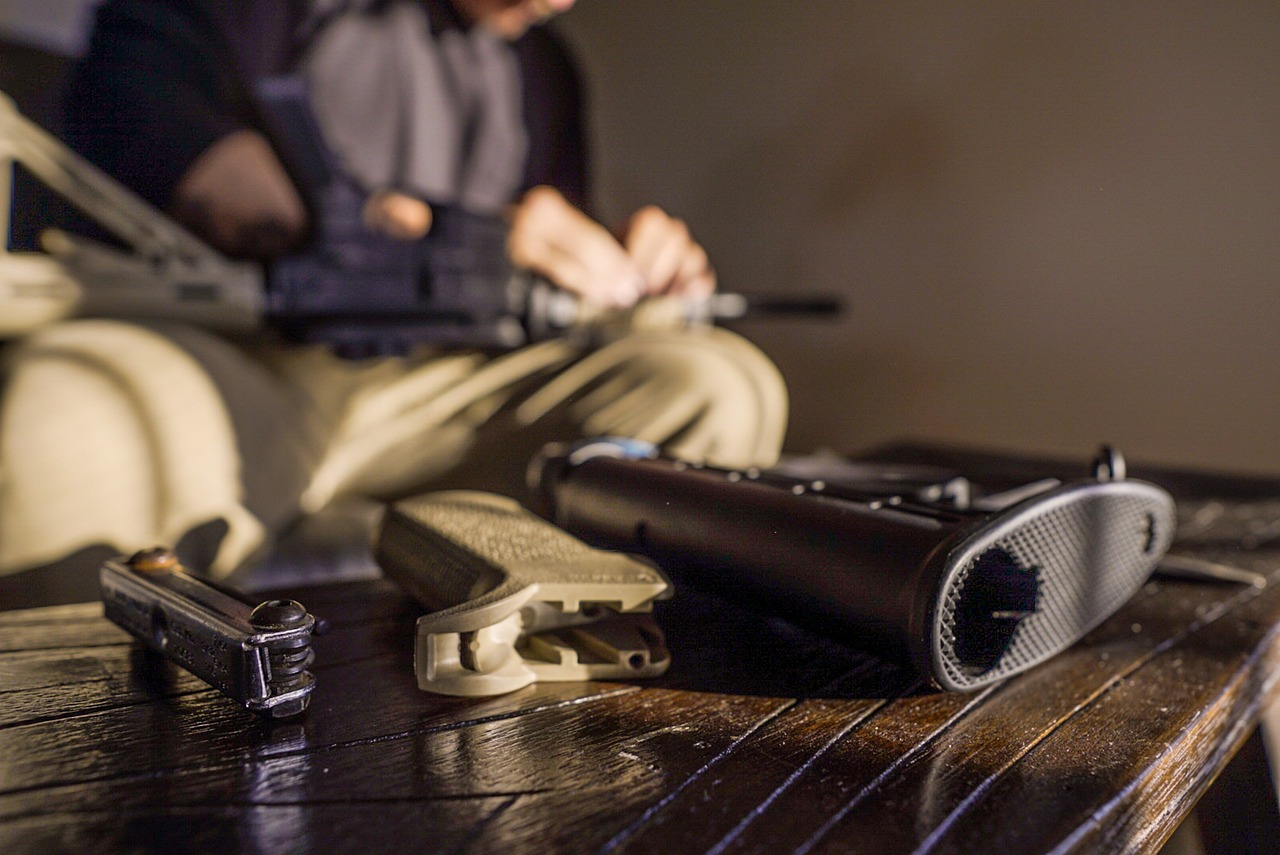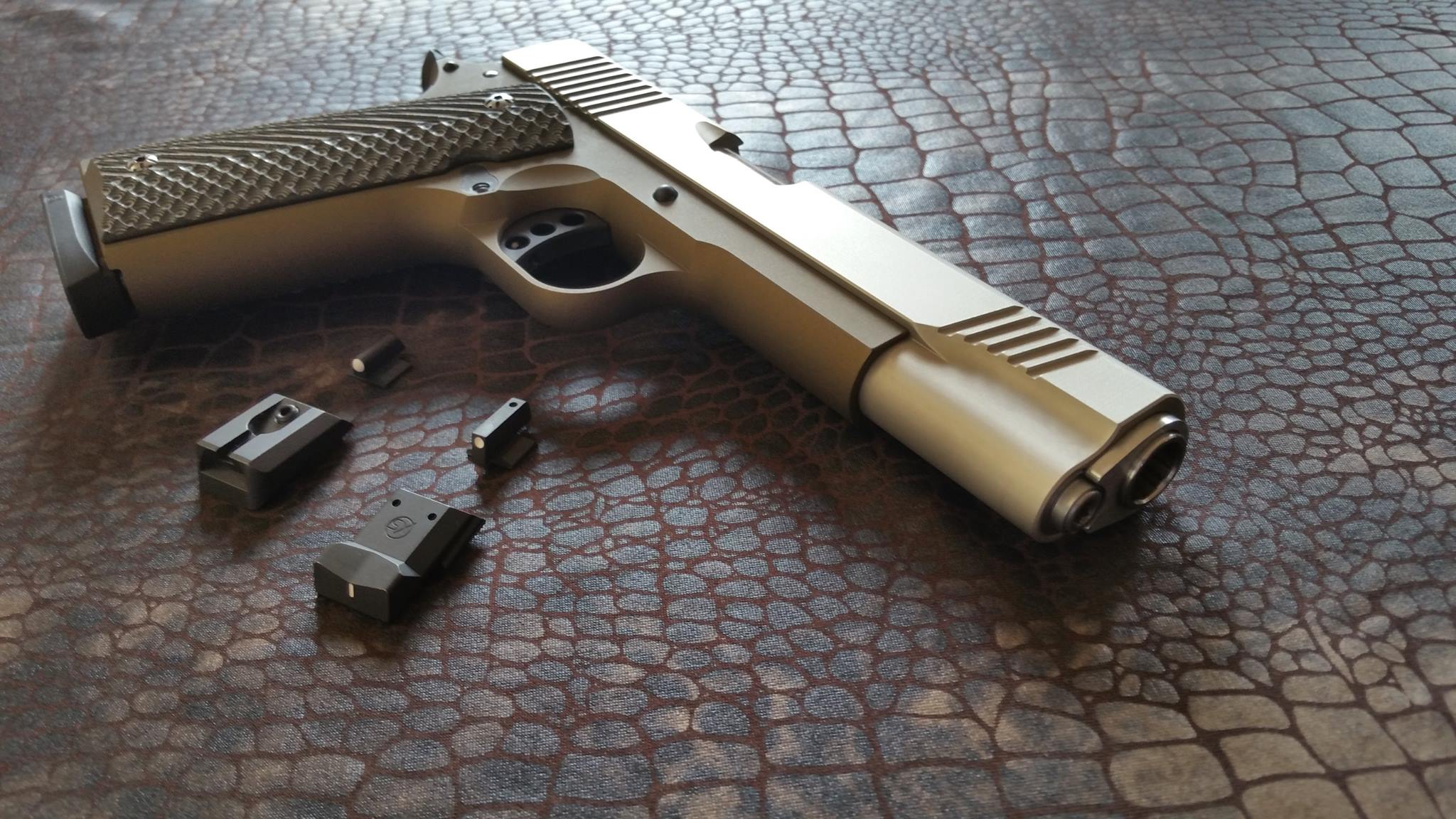
In 2024, there’s little debate that the AR-15 is “America’s Rifle.” But just how did this uniquely designed firearm ascend to its current place in the sun?
This weapon platform actually has a pretty unique origin story. Let’s take a look at the history of the AR-15 and the path it took to becoming one of the most prolific guns in the history of the world.
AR-15 Origins: The Armalite Rifle
The progenitor of the AR-15 was an American machinist named Eugene Stoner. I’m just gonna write it here because we’re all thinking the same thing: that’s an amazing name for a weapons designer!
Stoner was born in Indiana but moved to Long Beach, CA, as a child. He spent his early adult life poor during the Great Depression. Instead of going to college, he got a job at Vega Aircraft company, a precursor to Lockheed Martin.
When the U.S. entered the Second World War, he enlisted in the Marine Corps. He worked in Aviation Ordnance, which exposed him to weapons systems for the first time.
After the war, Stoner began working as a machinist. In 1954, he became the Chief Engineer at Armalite, a small arms company based, out of all places, Hollywood, CA. It was at Armalite that he designed the gas-operated reloading system for the Armalite Rifle, or “AR.”
Stoner originally designed the reloading system for the AR-10 chambered in 7.62×51. But in 1957, the military decided to cut back on weight. They switched to the 5.56×45 cartridge, and Stoner redesigned the AR-10 as the AR-15, chambered in this new cartridge.
Becoming the M-16
After Stoner developed the AR-15, the military spent the next 5 years testing it. In January of 1963, Secretary of Defense Robert McNamara announced that the AR-15, under its new moniker of “M16,” would replace the M14 in Vietnam.
There were several factors that went into this decision:
- 5.56×45 cartridges were lighter and allowed an individual soldier to carry more ammo.
- The M16 itself weighed 7.4 lbs. — 2.5 lbs. lighter than the M16, which weighed nearly 10 lbs.
- Lighter recoil made the weapon easier to manage during full-auto operation.
With those three big benefits, you’d think that this fancy new plastic gun would be a hit among soldiers, right?
Wrong.
At first, troops weren’t particularly thrilled with the M16. The gun didn’t operate well in the humid environment of the Vietnamese jungle. It would often jam in combat, leading troops to decry their new weapon as a failure. Some of them even preferred their old M14s to their new service rifles.
After Vietnam
After the U.S. pulled out of Vietnam, the military implemented some changes to make the AR-15 more robust. They designed a heavier buffer spring to slow down the gun’s rate of fire, along with thickening up the plastic in the stock’s construction. They also chrome-plated the barrel to resist corrosion, and applied a phosphate coating to steel parts to further resist rust. This new version of the gun, which appeared in 1970, was dubbed the “M16A1.”
In 1994, the military further upgraded its weapon of choice. They chopped the M16’s barrel from 20 inches to 14 inches. The new fighting rifle also included an adjustable buttstock. The new gun, dubbed the “M4,” had pretty much completely replaced the M16A1s by 2005.
Present Day
Today, there are more than 20 million AR-15s in the hands of American civilians, and about one in twenty civilians owns at least one of these iconic rifles. It has become so ubiquitous that nearly one in every four guns manufactured today is an AR-15. Their modularity, relative affordability, and ergonomics all play into why these rifles have become the most popular in the country.
Since they are so iconic, AR-15s have become the face of the gun debate today. They’ve become so controversial that 10 states — California, Connecticut, Delaware, Hawaii, Illinois, Massachusetts, Maryland, New Jersey, New York, Washington, and Washington, DC — have all worked to ban AR-15s in some form or another. Colorado’s next up on the list.
I’m not going to wade into politics here. I just think they’re neat.
That looks like it’s a wrap for a crash course on the history of the AR-15. Stay tuned, though. We’ve got more AR-15 content planned over the next few months, so keep an eye out for it!
Learn More About AR-15s at SDI
Do you love learning about the functionality of firearms as much as their history? Let SDI give you the tools you need to become an AR expert. To learn more and explore the classes SDI offers, click here.


